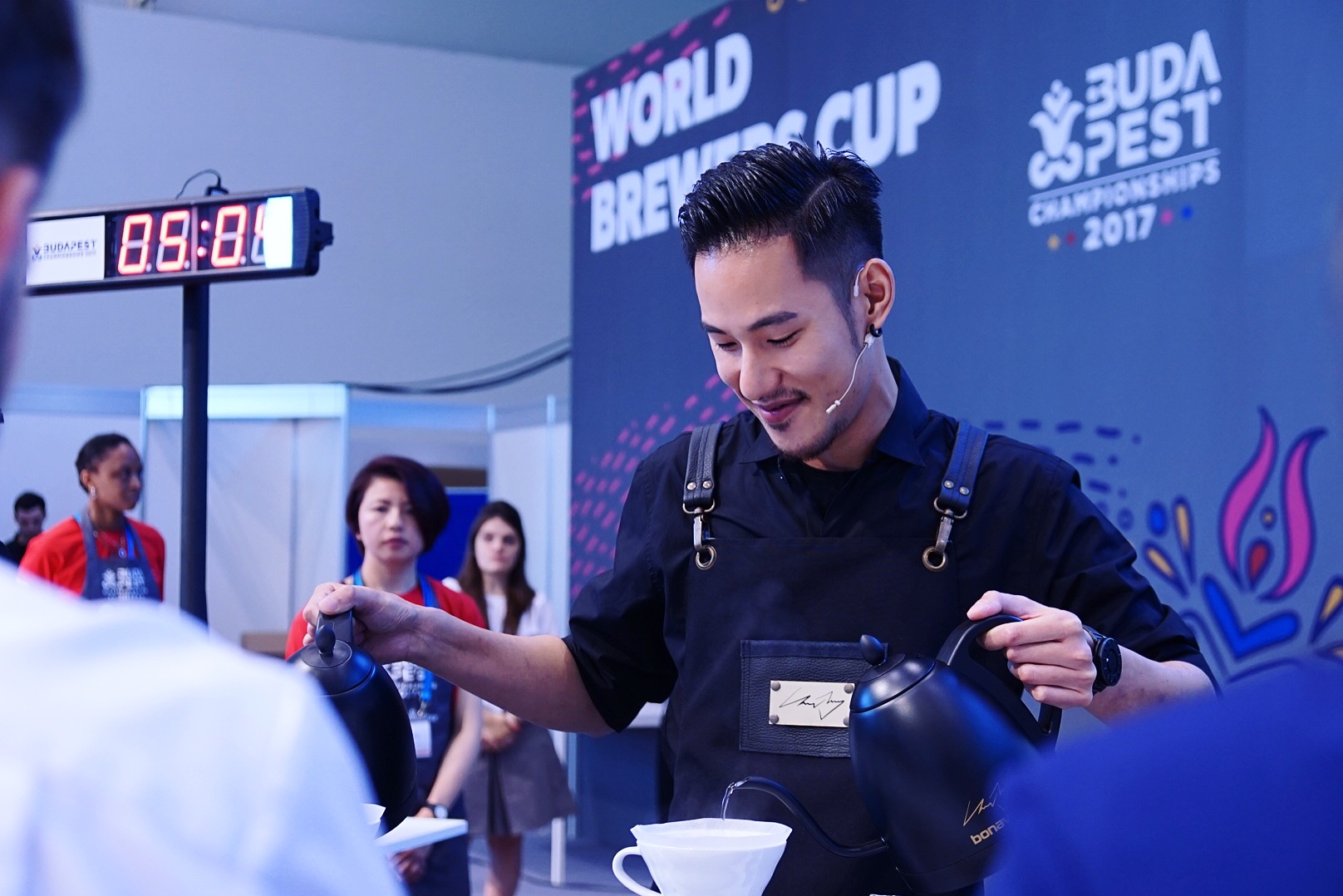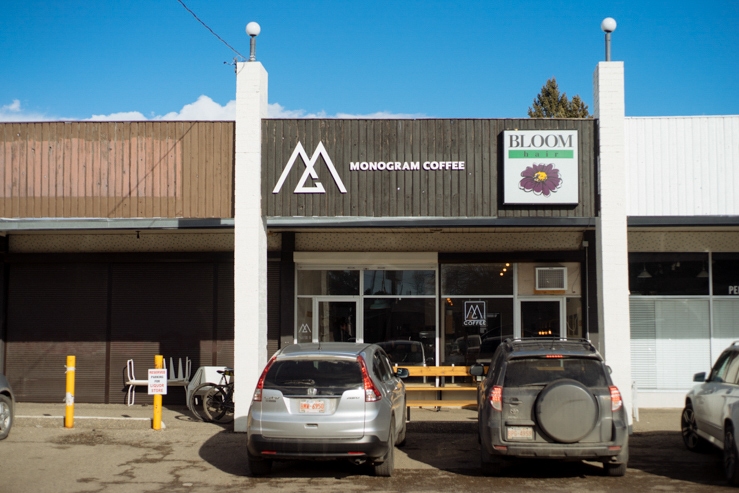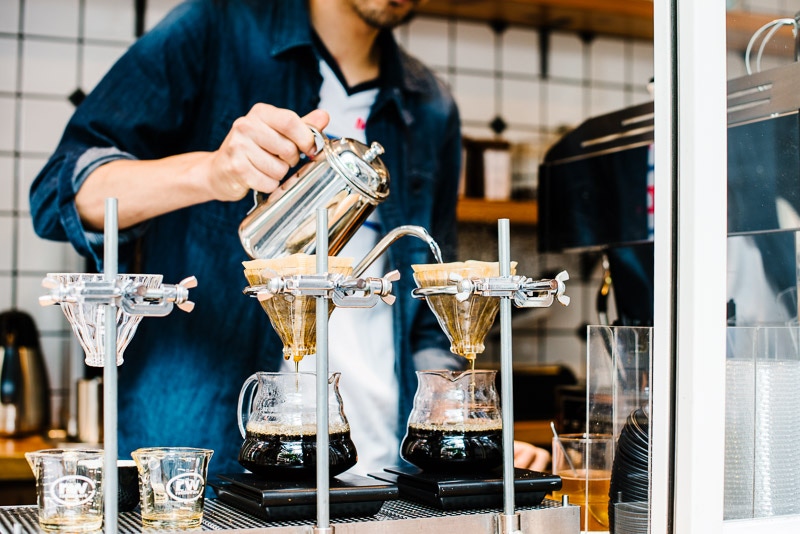
If you are fortunate enough to source this coffee, which originates from Ethiopia but has gained its reputation among highest elevation farms in Panama, you should certainly give it a try. However, a word to the wise: with an expensive coffee like a Gesha, a little planning can go a long way.
To learn how best to experience and brew a Gesha, we connected with 2017 World Brewers Cup Champion and Urnex Ambassador, Chad Wang. With formal culinary training at Le Cordon Bleu in London, four origin trips completed and countless hours training and preparing for international coffee competitions, Chad is ideally qualified to identify a standout coffee and recommend the preparation and tasting methods that will amplify the coffee’s exquisite qualities.
The Coffee
Origin: Panama
Variety: Gesha
Roast Level: 70-87
Recommended Brew Levels
1. Pour Over
2. Infusion
3. Combination of both
For the pour over method, we have a ceramic Hario V60 on hand. This is also the same brew method used by Chad in his world title winning presentation. For the infusion method, we have a French Press. No surprise as this is a very accessible immersion brew method. For a method that combines both pour over and infusion, we chose another approachable manual brewer, the Clever Dripper.

Water
A brewed cup of coffee is 98% water, which means this ingredient is just as important as the coffee itself. Barista competitors like Chad will choose water with certain PH and TDS levels.
Chad recommends a water temperature of 92 degrees C / 198 degrees F for each of these three brew methods.
Grind Size and Brew Time
The higher the number on the micron scale, the larger the grind size. For pour over, Chad recommends a grind size of 400 microns. For the infusion method, Chad recommends a grind size of 600 microns. His grind size recommendation for the brew method that combines both is 500 microns. Remember that more exposed surface area (fine sugar) means a faster rate of extraction, or more soluble solids dissolved in less time. Chad’s recommendation at 400, 600 and 500 microns are well below the Gold Cup standard for automatic drip brewers (845 microns), and so his recommended brew time is shorter as well. The chart below illustrates Chad’s advice for grind size and brew time depending upon the selected brew method.

1. Grind size
2. Grind uniformity
3. Exposure time to hot water
4. Amount of coffee and water used in brewing (a.k.a. the brew ratio or recipe)
We borrowed the brew recipe that Chad used to win the world title. For all three brew methods (V60, French press and Clever Dripper) we used 15 g of ground coffee and 250 ml water with a 30 second bloom at the start of brewing. For the V60, water should be drawn at 2 minutes. For the French press, water should be drawn down at 2:30 and for the Clever Dripper, somewhere between 2:00 and 2:15.
Flavor Profiles
Through proper harvesting, natural processing and light roasting, a Gesha variety coffee from Panama can produce stone and melon fruit sweetness with floral notes, especially just after brewing, when it is hot. The coffee will become even sweeter as it cools. Look for butterscotch transforming into deep caramel as well as citric and malic acids turning to a ripe mango-like sweetness.
For this brewing exercise, Chad provided his recommendations and we then used that information as our starting parameters. Our goal was to experience the flavors that we know to expect from a naturally processed Gesha variety from Panama. However, the lessons learned here can be applied to coffees of many origins, varieties, processing types and roast levels.
Thanks to Chad’s guidance and expertise, we can do better than brew one amazing cup of coffee. We can use this information and process to produce a consistently tasty result over many brews.


